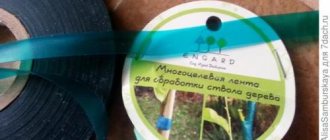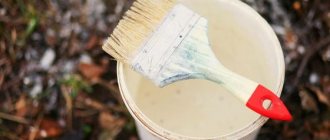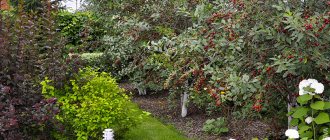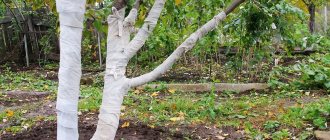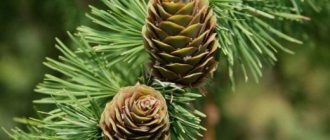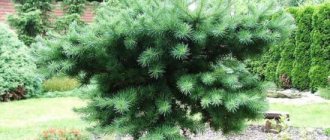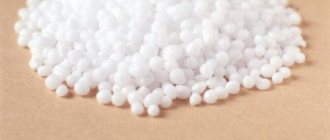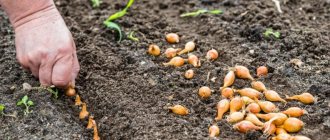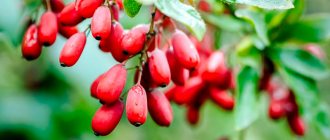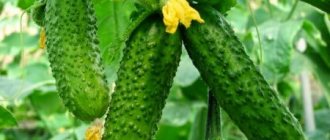Young fruit trees must be covered for the winter - this is necessary, since frosts can damage their root system and cause the death of the plant. Newly planted fruit plants in the garden should begin to be prepared before frost begins. The timing of covering fruit crops depends on the climate of the region where they are grown. Also, climatic conditions influence how and with what to cover garden trees and whether it is necessary to wrap their trunks. Step-by-step photos and detailed instructions help inexperienced gardeners to properly prepare young plants for winter and get a good harvest in the future.
Why are young trees covered?
Trees that have recently been planted in the garden need to be covered for the winter. Such fruit plants are wrapped in various materials that protect them from unfavorable winter conditions. It is important to insulate for the winter those fruit trees whose bark is still thin. This measure helps to eliminate several problems at the same time, which can subsequently not only reduce the yield of fruit crops, but also cause their death. You need to cover the trees in your garden for the winter to:
- provide shelter for the bark from bright sunlight;
- prevent the appearance of frost holes;
- save plantings from damage by cold winds;
- prevent hares, mice and other rodents from gnawing on the bark.
Attention! Not all fruit trees need to be covered. First of all, young non-zoned specimens and heat-loving crops - apricot, apple, pear, plum, peach - are insulated. Plants with a shallow root system also need shelter from frost.
How to insulate young apple trees for the winter
After harvesting apples, you must immediately worry about how to prepare these trees for wintering. Despite the fact that many varieties of apple trees tolerate cold winters well, it is still worth taking measures to insulate them. This will have a positive impact on the development of both the seedling itself and the quality of the future harvest. If severe frosts last only a few days, then they are not terrible for the trees.
Hungry hares can cause more harm. Therefore, before starting insulation, it is necessary not only to do everything to protect the seedlings from severe subzero temperatures, but also to protect them from various rodents, including mice. Damage to the bark of young trees is fraught with the development of all kinds of diseases, which can inevitably result in their death.
The technology of insulating apple trees is no different from other trees. Everything must be done to keep the trees healthy and strong: constant watering, loosening the soil, fertilizing. Young trees must be insulated, but if their age has reached 5 years or more, then this need not be done. The exception is columnar apple trees, which need to be insulated constantly.
Where do you start preparing?
Before sheltering young trees for the winter, gardeners carry out certain preparations. It is required to prevent diseases, remove pests and reduce the risk of accidental damage to plants during the winter season. Before the first autumn frosts and before the immediate insulation of individual young specimens of fruit-bearing trees, do the following:
- Clear the garden of fallen leaves, fruits and branches. During such cleaning, special attention is paid to the tree trunk circles, since these plant debris may contain pest larvae, bacteria, viruses and fungal spores. If not removed, after winter they can potentially cause deterioration in the condition of young trees.
- Young plants, as well as the soil in their trunk circle, are treated with a vitriol mixture. Use a solution of copper or iron sulfate according to the instructions. This treatment helps eliminate the vast majority of harmful insects that attack fruit crops.
- If there are lichens or mosses on the shoots or trunk, they are cleaned off, since such “neighborhood” can be very harmful to young plants.
- The lower part of the trunk is whitened with a solution of freshly slaked lime (2 kg dissolved in 10 liters of water and 500 g of copper sulfate added). This is done to prevent cracking of the bark due to temperature changes in winter. Whitewashing also protects the young bark from rodents.
The final stage of preparing young fruit trees is autumn formative pruning of the crown. It is carried out in order to improve the growth of the specimen for the next year and remove all unnecessary shoots, which only draw the plant’s strength onto itself, but do not bring any benefit. Thin branches that have not become lignified are cut with sharp pruning shears, and thicker ones with a garden saw. The instrument is disinfected before the procedure. After pruning is completed, all damage is treated with garden varnish, RanNet paste or another similar preparation.
Preparatory work
May be interesting Cherry "Turgenevskaya": Description of the variety How to properly propagate pomegranate at home Why pear fruits rot right on the tree and what to do about it
Before covering fruit crops for the winter, preparations are made. The branches are harvested. All rotten and damaged fruits are collected and destroyed. Do the same with fallen leaves. They may contain pests and pathogens. Therefore, the foliage is removed to prevent infection of young shoots in the spring. To prevent infections, treat plants with the following means:
- lime;
- copper sulfate;
- potassium permanganate.
Some insulation materials can be used repeatedly. Then they are pre-dried and disinfected to avoid infection.
Tree trunks and skeletal shoots are whitened to prevent the penetration of insects, protect against sunburn and frost damage.
Advice!
Coffee grounds are used to protect the roots from rodents. The strong aroma of this product drives away animals, harmful insects, and slugs.
Timing of tree covering
For the winter, young trees need to be covered before the onset of frost, but it is important not to insulate them too early. Gardeners determine the exact dates when they need to start preparing garden crops for winter, taking into account the climatic conditions of the region and the current weather. First of all, they look at the average daily temperature, which should be approximately +10˚ C. When the thermometer mark on the street drops to 0˚ C, the garden should already be completely insulated. The approximate time for organizing the insulation of young fruit trees is:
- South - Krasnodar, Crimea, Caucasus - the second half of November and the first ten days of December.
- Middle zone - Moscow region, Volga region and other regions - the last days of October, the first ten days of November.
- Northern regions - the Urals, Siberia - from the last days of September to the last ten days of October.
- Far East - from the beginning of October until its last days.
- Leningrad region - from mid-October to the first days of November.
Attention!
In the southern regions, there is no need to wrap the trunks of young trees for insulation. However, it is worth organizing their protection from rodents. Building materials are often used for this.
What is recommended to wrap the trunks with?
It is recommended to wrap the trunks of fruit trees grown in regions with cold climates with different materials. The choice of a particular one depends on how much the outside temperature drops during the winter season. Each of the materials and methods for protecting fruit crops from frost and other unfavorable factors that affect young plants in winter has advantages and disadvantages.
Necessary materials
To protect young fruit trees in winter, it is imperative to prepare covering materials and ensure the safety of the plant from insects and rodents. Simply wrapping the trunk in a plastic cocoon is not enough. If rats, hares and mice appear on the site, there is a risk of damage to the thin bark of young trees. For normal protection, it is recommended to prepare the following materials:
- heat insulator - spruce branches, agrofibre, or other insulation;
- fabric for tying - wire, tape, polyethylene, rope;
- fence - plastic or metal solid mesh;
- insecticides and pesticides - to kill pests and repel them.
On a note!
Bordeaux mixture can be used as a complex solution that is completely harmless to the plant. It is used to treat covering materials and soil in the tree trunk circle.
Myth 5. Non-woven material will protect plants from any adversity
Covering synthetic materials quickly won the love of summer residents, and they began to be actively used to protect various crops not only from cold weather, but also from weeds and to preserve moisture. Unfortunately, dense materials sometimes play a cruel joke on summer residents. Initially they were developed for countries with warm and little snow winters. But when they began to be used in conditions of temperature changes, it turned out that with the arrival of spring the plants began to die. Coniferous plants and ornamental thujas were especially bad at winter under cover. Due to temperature changes, they found themselves trapped in an ice shell, which their shelter turned into. As a result, gardeners became disappointed in the new material and stopped purchasing it.
There is no need to cover the plant early; in any case, it should harden a little at temperatures down to –5°C
This was due to the fact that conifers were carefully wrapped completely in impenetrable material. Place the film over the top of the tree, covering about 1/3 of the trunk. But even in this case, do not fix it rigidly, but organize something like a “wigwam”. The needles will not come into contact with the frozen film and will be able to breathe. The shelter will also protect the tree from sunlight, which is especially insidious during thaws.
In this case, cover the lower part of the tree with snow and lay spruce branches on top. It is possible to completely cover the plant with non-woven material closer to the beginning or mid-March, when all the snow has melted.
What techniques do you use to cover plants in the garden? Share your ideas and observations, both positive and negative. In the first case, our readers and I will be able to be happy for you, and in the second, together we will try to find ways to solve problems with winter shelter.
How to cover properly
In young fruit trees, the parts most susceptible to damage in winter are the roots and trunk. They can freeze when the temperature drops significantly or suffer from rodents and insects. To ensure normal protection of the tree, after preparing all the materials and carrying out the treatment with pest control agents, you need to properly cover the tree. The main rules are:
- Be sure to fertilize the soil in the tree trunk circle and mulch it with leaf litter, wood shavings or sawdust.
- The root area of the trunk must be wrapped more tightly - this will provide additional protection from pests and temperatures.
- After laying the film or agrofibre, you can tie spruce or juniper spruce branches to the trunk - no less than 1 m upward from the ground.
- If a lot of snow falls in winter, be sure to rake it up to the trunks of young trees.
- It is recommended to additionally spray the covering material and spruce branches with naphthalene or another rodent repellent.
- To protect the roots in the ground, it is better to place a protective net at a distance of 20-30 cm from the trunk.
How to insulate a peach for the winter
You won't surprise anyone with peaches today. These trees grow and bear fruit at almost any latitude. But to harvest a large harvest, they need to be looked after, including insulation. Such plants are afraid of temperatures of -25 degrees; they may not bear fruit or completely dry out from hypothermia.
The preparation of such trees for winter begins long before it begins. First of all, shavings and sawdust are prepared. A cardboard fence is installed around the trunk to prevent rodents from damaging it. Peach pruning is done differently from other trees. This event is held in the spring so that by the time cold weather sets in, the tree will already be healthier and survive the winter well.
In addition to the insulation process itself, it is necessary to first remove all areas damaged by the disease, including curliness. This can be done by using fungicide-based preparations. If peaches are overpowered by aphids, then it is necessary to apply pesticides in the required dosage.
Before warming a peach, it should be properly watered and sprinkled with sawdust around the trunk. This will prevent the soil from freezing and damaging the root system in winter. Such wood must be whitewashed. This can be done both in autumn and winter. To ensure that the peach overwinters well, it can be treated with Bordeaux mixture. But this should be done when all the leaves from the tree have fallen.
Bordeaux mixture is a mixture of lime and copper sulfate
The worst case is if a thaw occurs in winter, which can contribute to the premature movement of sap before the onset of spring. To prevent this, an impressive layer of straw, fallen leaves or hay is laid on the ground near the trunk.
To ensure that the root system remains viable and undamaged in severe frosts, it is insulated with manure, which has unique insulating properties. Ash can be used instead of manure. Peach branches can be covered with paper, old wallpaper or agrofibre. You should not use plastic film for these purposes. The peach under it may mate and die.
